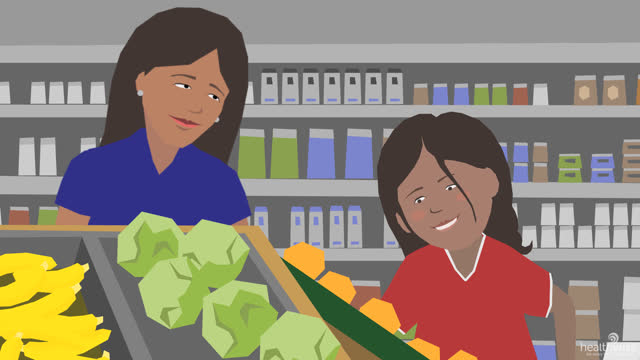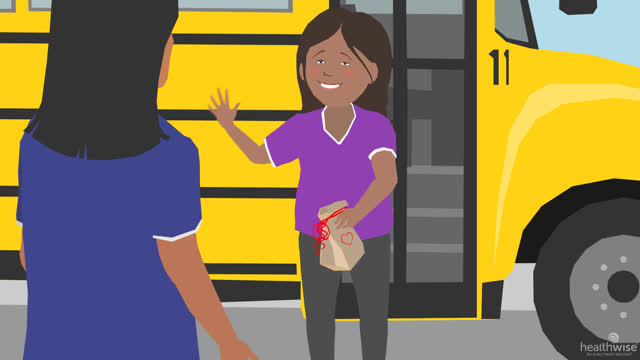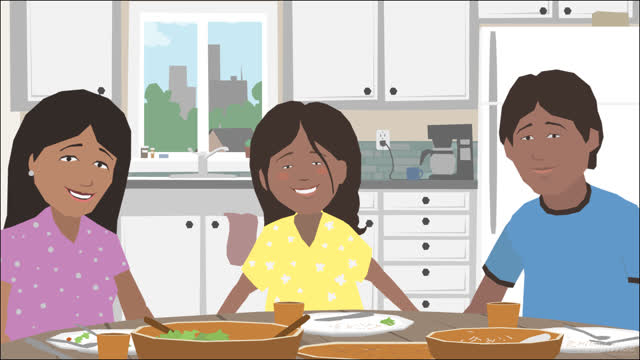Diabetes in Children: Food Issues at School
Topic Overview
New challenges emerge when your child with diabetes begins school. Starting a good communication system with key people at the school can help make this transition a smooth one. It’s helpful to schedule a conference with school personnel—principal, teachers, coaches, bus driver, school nurse, and lunchroom workers—after your child is first diagnosed. Do this again at the beginning of each school year.
Your child needs to always have available the supplies for doing a blood sugar test. If possible, the school nurse will have these supplies available also.
Food issues
Snacks, school lunches, and party food are issues that need to be addressed before your child starts school.
If your child takes insulin, his or her teacher needs to understand why snacks are so important. Explain how snacks prevent low blood sugar. Teachers should know that snacks should never be withheld or delayed. Provide details on when your child needs snacks—for example, during the day and either before, during, or after exercise.
Your child can have regular school lunches. If there are many items to choose from, your child needs to understand the meal plan thoroughly to make the best choices. Ask to be informed in advance if meals will be delayed because of special school activities, such as parties or trips, so that your child’s insulin or snack schedule can be adjusted accordingly to prevent a low blood sugar episode.
Treatment plan
A treatment plan should list:
- When blood sugar should be checked and insulin given.
- When meals and snacks should be given.
- Preferred snack and party foods.
- Your child’s usual symptoms of low and high blood sugar (hypoglycemia and hyperglycemia).
- Preferred treatment for hypoglycemia and hyperglycemia and when to notify parents.
- Emergency contact numbers, including parents and health professionals.
The plan should specify how your child’s needs are taken care of and which member of the school staff is responsible for implementing the plan. Your child may need an emergency glucagon shot if he or she is having an episode of low blood sugar. Because of this, the school must select a person in advance to give the glucagon. Your child can then have treatment without delay.
A diabetes educator can help you make a treatment plan for your child. Update the plan each school year.
Preventing hypoglycemia
For children who take insulin, low blood sugar can result from additional exercise or not enough food, as well as from too much insulin. Have your child carry a quick-acting source of carbohydrate, such as glucose tablets, glucose gel, or juice, to be used in case of a low blood sugar episode.
Make sure your child can identify and treat symptoms of low blood sugar, or ask a teacher for help. Also, have your child carry snack foods, such as pretzels, snack crackers, or a sandwich, to cover unplanned activity or delayed meals. It’s a good idea to ask your child’s teacher to keep one or more of these items in his or her desk.
Current as of: April 16, 2019
Author: Healthwise Staff
Medical Review:John Pope, MD, MPH – Pediatrics & Adam Husney, MD – Family Medicine & Kathleen Romito, MD – Family Medicine & Rhonda O’Brien, MS, RD, CDE – Certified Diabetes Educator & Colleen O’Connor, PhD, RD – Registered Dietitian
This information does not replace the advice of a doctor. Healthwise, Incorporated, disclaims any warranty or liability for your use of this information. Your use of this information means that you agree to the Terms of Use. Learn how we develop our content.




